The island where wild animals are the protagonists of a unique world
2021/1/5
“Only here on earth.” The Galapagos Islands are located about 1000km west of Ecuador in South America, and just below the equator. In thiis special place, you can find mysterious and mind-bending creatures nurtured by the accumulated flow of time.Charles Darwin got the idea of evolution by observing the creatures living on these islands, and it became a place that has a great influence on the development of natural science. While an irreplaceable place to experience the mysteries of life, the ecosystems of these islands have been severely damaged by human activity. How will we protect and inherit this one-of-a-kind land? On a Peace Boat voyage, you can travel through the Galapagos Islands while experiencing the island’s rare nature.
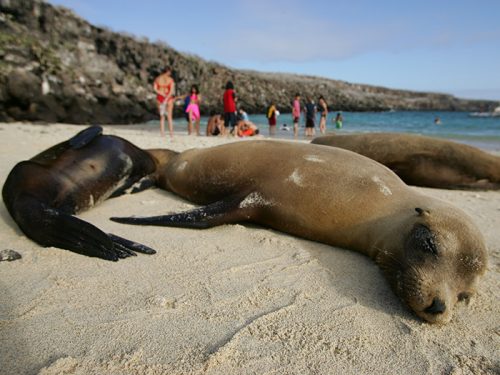
An island where humans were unkown.
The Galapagos Islands were born from the eruption of a submarine volcano about 10 million years ago. The winds and waves carried seeds of plants to the empty island, and birds, giant tortoises, and iguanas gradually flowed. These creatures underwent their evoluntion in order to adapt to the environment of the island. The island’s unique ecosystem was registered as the first UNESCO World Natural Heritage Site in 1978. However, environmental destruction by settlers and the presence of non-native species pose a crisis to the island’s ecosystem, and in 2007 it was added to the World Heritage in Danger List. Although later removed from the list due to the efforts of the people, the world learned from this process the importance of the island, a “treasure of endemic species.”
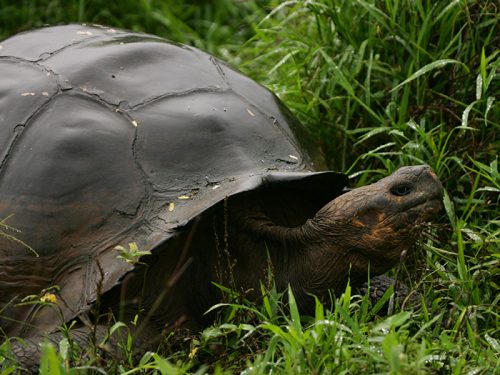
That we can learn from endemic species
The Galapagos Islands are a world where wildlife has the lead role. When visiting this area, we will comply with the rules set by each island so that animals and plants can live as they should. Of course, collecting and taking out wildlife is strictly prohibited. In the island, one can only walk at certain areas and act in groups of 16 or less with a certified “Naturalist Guide”. After arriving, the first place we visited was the Charles Darwin Research Station, which protects and breeds Galapagos tortoises. The world’s largest tortoise, endemic to these islands, has already become extinct in four subspecies due to overfishing. At the institute, activities to protect the remaining subspecies are continuing, and currently 20,000 tortoise are being raised.
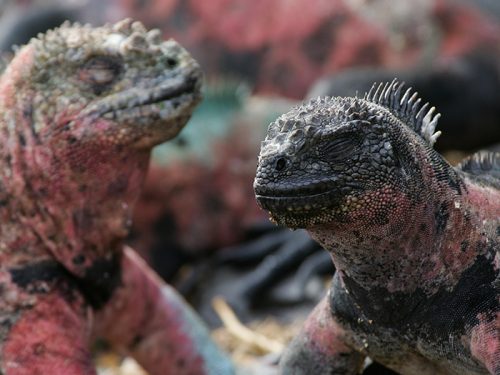
Each turtle has its own characteristics. Turtles that live on grassy islands have short necks and dome-shaped shells, and turtles that eat high-altitude food such as cacti on grassless islands have long necks and saddles. You can see that they have evolved according to the environment of each island. Later, we board a small boat and head out to the sea, which boasts outstanding transparency. The Galapagos land iguana and marine iguana inhabit the South Plaza Island. The appearance of a liquiguana patiently waiting for the fruits and leaves to fall under the favorite prickly pear cactus tree seems to teach us what is important to us living in the present age without hesitation.
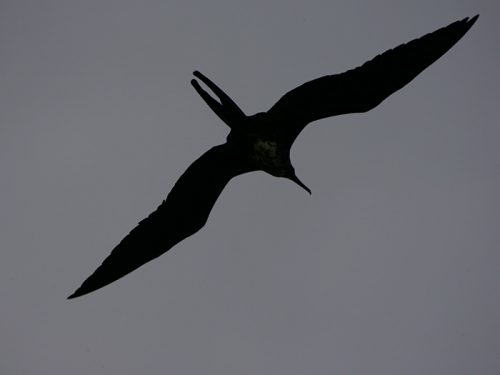
In the rocky areas south of the island, you can see bird nests built on the cliffs of the cliffs. If you look up at the sky, you can see the red-billed tropicbird and the frigatebird fighting for food, and if you are lucky, you can also meet the blue-footed booby, also known as the “Galapagos idol.” When we entered the sea between the islands, the Galapagos sea lions, who are not afraid of humans, swam near us as if they were saying, “Let’s play together!” The island’s ecosystem is perfectly balanced by choosing a non-competitive lifestyle, such as fish-eating sea lions and gannets, and plant-eating giant tortoises and land iguanas.
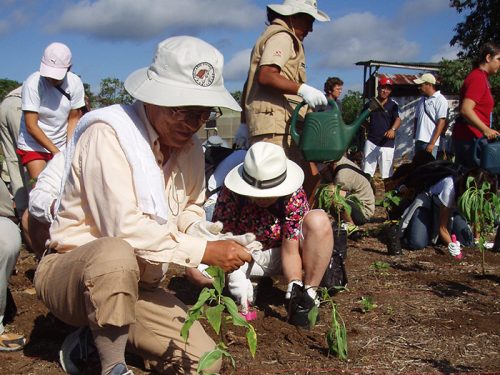
The future of the Galapagos Islands
Just before the Galapagos Islands were listed on the World Heritage in Danger, Peace Boat and photographer Koichi Fujiwara launched the Glapagos Forest Restoration Project, recognizing the historical value of the islands and the importance to connect them to the future generations. Every time a participant visits the Galapagos Islands on a Peace Boat voyage, they plant seedlings such as Scallesia, which is endemic to the island, with local junior and senior high school students in an attempt to regain the ecosystem destroyed by exotic plants brought in by humans. These seedlings that are planted little by little over the years will create new primeval forests.
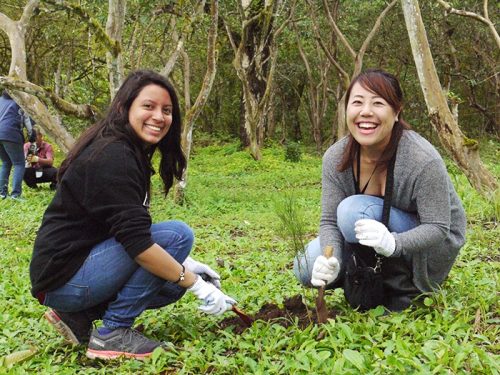
In response to this project of Peace Boat, which has a partnership with the United Nations’ SDGs (Sustainable Development Goals) campaign, local people have commened: “There are many tourists visiting Galapagos, but they plant trees in the area and visit us continously, which I think is something wonderful. I hope they will continue to watch for the growth of this island. ” Interacting with students is also an important time, we had the opportunity to talk with them as we had some food served.

“The nature of this island is a natural sight for us, and it’s hard to tell that we’re in danger. But many people come from faraway countries, giving us many opportunities to learn how valuable it is.” By visiting and welcoming each other, a positive impact is created, opening the possibilities to a new the future of the island, ones that will grow as the planted trees grow. Even though the islands are not on the World Heritage in Danger List anymore, some people think that the island’s environment is still recovering and people should avoid coming. However, by actually visiting and getting to know the current state of the island, I realized that it is our human mission to restore this nature.
